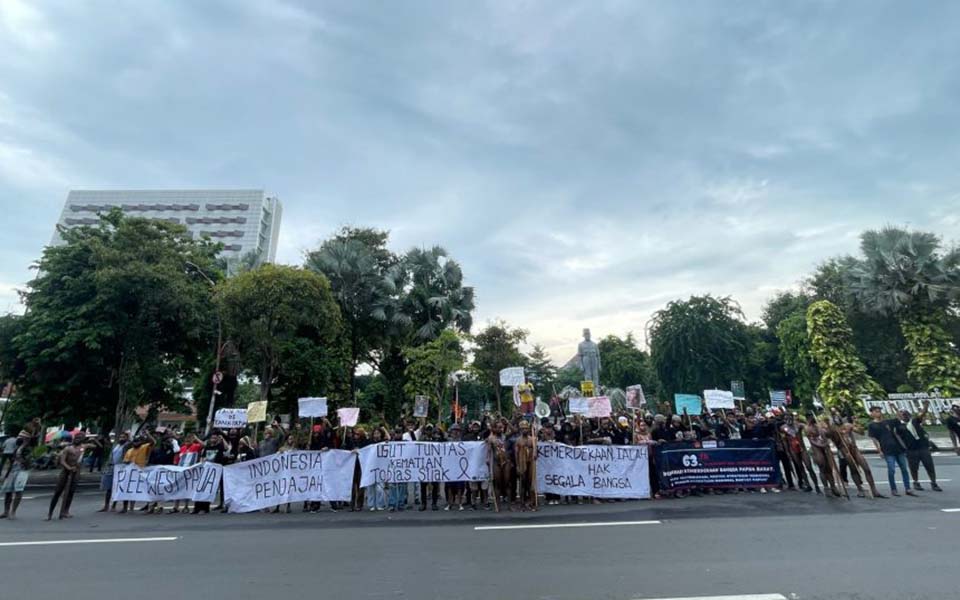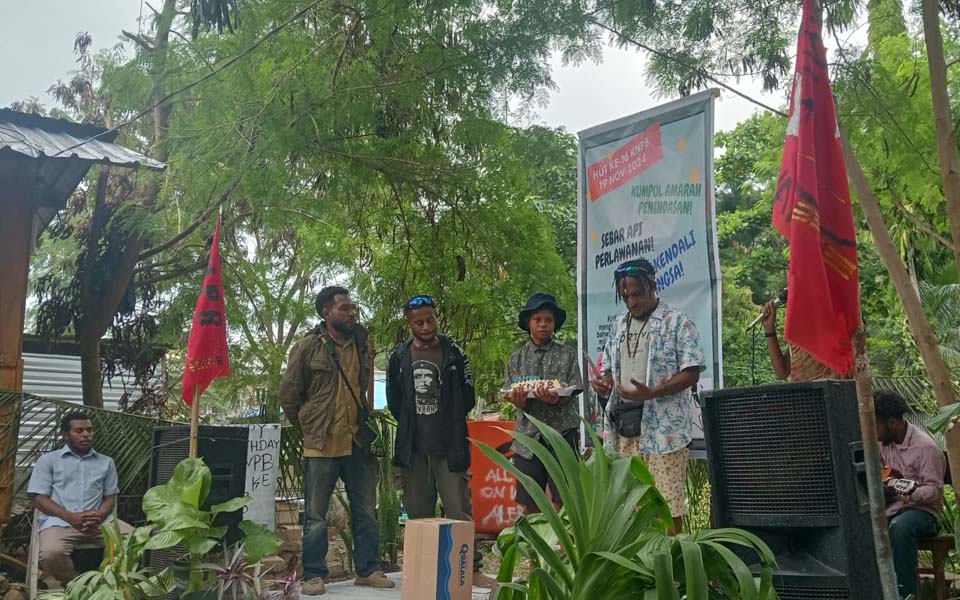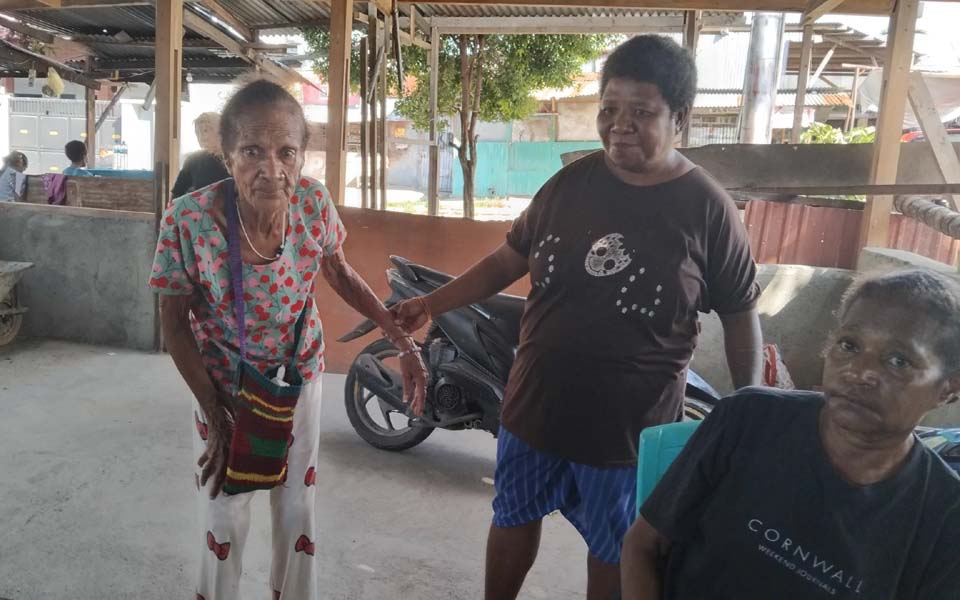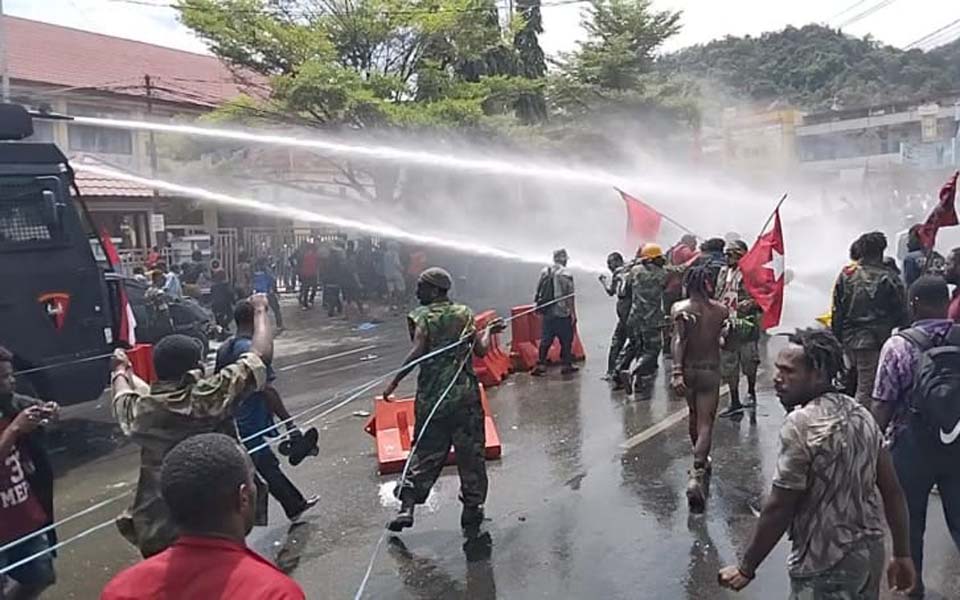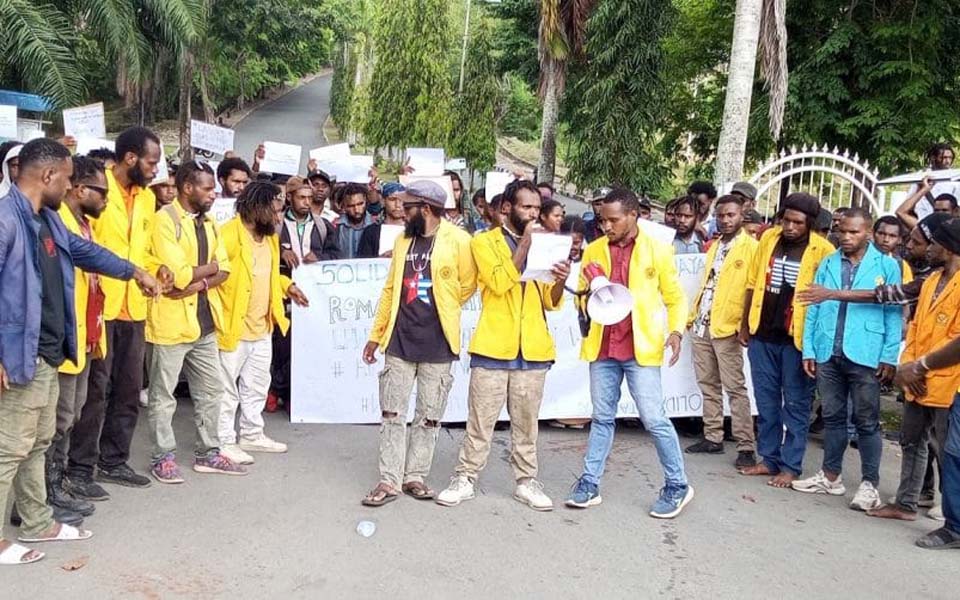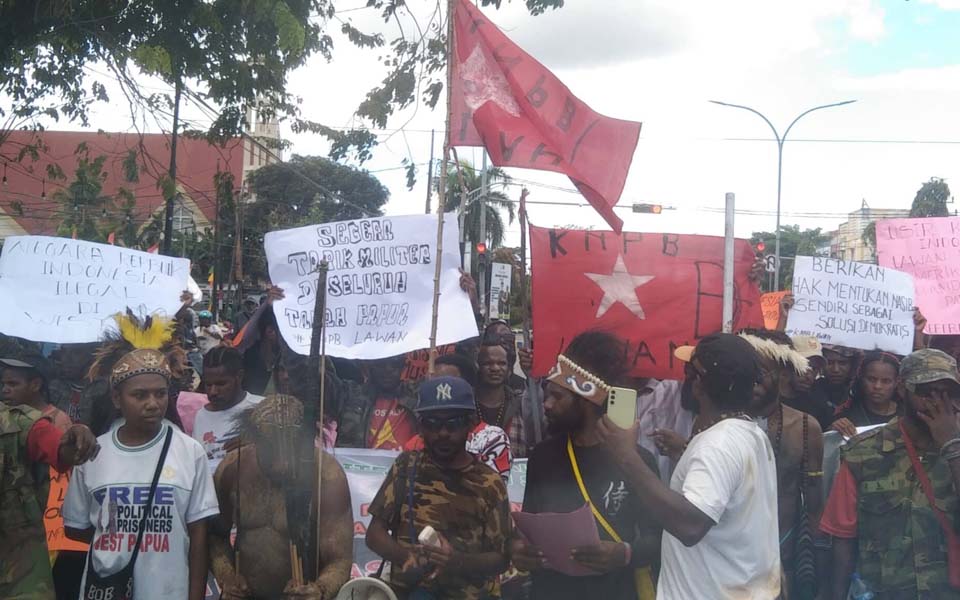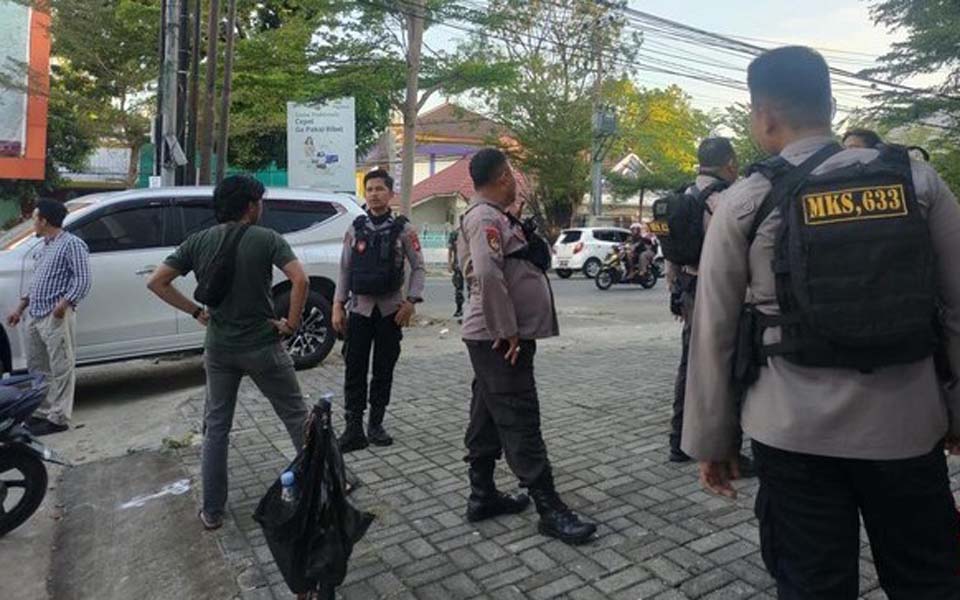Tony Firman – A protest action by the Papuan Student Alliance (AMP) in the East Java provincial capital of Surabaya on December 1 demanding self-determination for West Papua has been attacked by a group of ormas (social or mass organisations) who demonstrated on the west and eastern sides of Jl. Pemuda.
The group, who came from a number of different ormas including the Community Forum for Sons and Daughters of the Police and Armed Forces (FKPPI), the Association of Sons and Daughters of Army Families (Hipakad) and the Pancasila Youth (PP), was calling for the AMP demonstration to be forcibly broken up.
“This city is a city of [national] heroes. Please leave, the [state ideology of] Pancasila is non-negotiable, the NKRI [Unitary State of the Republic of Indonesia] is non-negotiable”, screamed one of the speakers from the PP.
At 8.33am a number of PP members on the eastern side of the road began attacking the AMP by throwing rocks and beating them with clubs. Police quickly moved in to block the PP members then dragged them back.
The AMP protesters had began gathering at the Submarine Monument at 6am before moving off to the Grahadi building where the East Java governor’s office is located.
However they were only able to get as far as the Surabaya Radio Republic Indonesia (RRI) building before they were intercepted by police from the Surabaya metropolitan district police (Polrestabes) and the East Java district police (Polda).
The AMP demonstration was held to mark December 1, 1961 as the day West Papua became independent from the Dutch. For the Papuan people, December 1 is an important date on the calendar in the Papuan struggle which is commemorated every year.
The historical moment in 1961 was when, for the first time, the West Papuan parliament, under the administration of the Dutch, flew the Morning Star (Bintang Kejora) flag, symbolising the establishment of the state of West Papua.
Since then the Bintang Kejora was flown alongside the Dutch flag throughout West Papua until the Dutch handed administrative authority of West Papua over to the United Nations Temporary Executive Authority (UNTEA) on October 1, 1962, then to the Indonesian government on May 1, 1963.
The UNTEA was an international mechanism involving the UN to prepare a referendum on whether or not the Papuan people wanted to separate or integrate with Indonesia.
The referendum, referred to as the Act of Free Choice (Pepera), resulted in the Papuan people choosing to be integrated into Indonesia. Since then, the administration of West Papua has been controlled by the Indonesian government and the flying of the Bintang Kejora deemed an act of subversion (maker) and responded to with violence and arrests.
Notes
Although it is widely held that West Papua declared independence from Indonesia on December 1, 1961, this actually marks the date when the Morning Star (Bintang Kejora) flag was first raised alongside the Dutch flag in an officially sanctioned ceremony in Jayapura, then called Hollandia. The first declaration of independence actually took place on July 1, 1971 at the Victoria Headquarters in Waris Village, Jayapura.
Known as the “Act of Free Choice”, in 1969 a referendum was held to decide whether West Papua, a former Dutch colony annexed by Indonesia in 1963, would be become independent or join Indonesia. The UN sanction plebiscite, in which 1,025 handpicked tribal leaders allegedly expressed their desire for integration, has been widely dismissed as a sham. Critics claim that that the selected voters were coerced, threatened and closely scrutinized by the military to unanimously vote for integration.
[Translated by James Balowski. The original title of the article was "Peringatan 1 Desember Papua, Demo AMP Surabaya Diadang PP & FKPPI".]
Source: https://tirto.id/peringatan-1-desember-papua-demo-amp-surabaya-diadang-pp-amp-fkppi-daNJ






